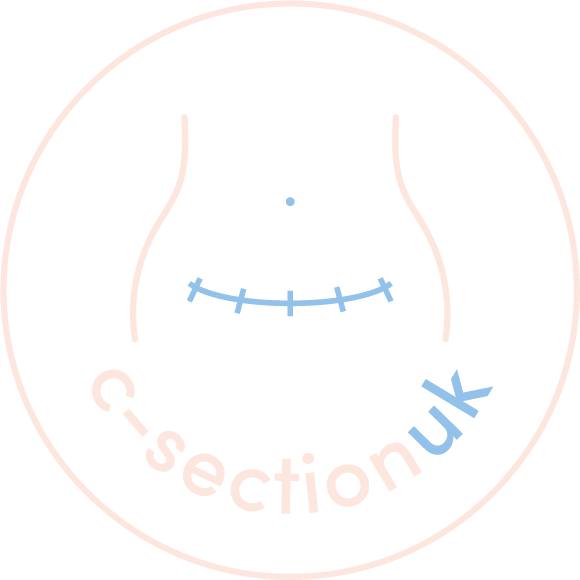How do you control swelling after a C-Section?
Swelling is a common—and often unexpected—part of recovering from a C-Section. Whether it's puffiness in the ankles or tenderness around the incision, many new mums are surprised by how swollen their body feels in the days following birth. The good news? Swelling is usually temporary and manageable with some simple, supportive strategies. Here’s what you need to know about why swelling happens and how to reduce it safely.
Is Swelling After a C-Section Normal?
What Causes Postpartum Swelling?
Several factors contribute to swelling after a C-Section, and most are entirely normal. One of the biggest culprits is the IV fluids administered during labour, surgery, and recovery, which can leave excess fluid in the tissues. In addition, the body triggers an inflammatory response to begin healing, which naturally causes localised swelling. Hormonal shifts—particularly the drop in progesterone—can lead to water retention. Finally, decreased mobility after surgery means fluid isn’t moving around the body as efficiently, further contributing to puffiness and swelling.
Where Does the Swelling Happen?
Swelling can appear in several areas, most commonly:
Legs, feet, and ankles – gravity draws fluid downwards, especially if you're sitting or lying down a lot.
Hands and fingers – rings may feel tighter, and hands can feel puffy.
Around the incision site – some swelling near the scar is normal as the tissue heals, though it should remain mild and not worsen.
Effective Ways to Reduce Swelling After a C-Section
1. Stay Hydrated
It might seem counterintuitive, but drinking plenty of water helps flush out excess fluids from your body. Staying well-hydrated supports your kidneys and lymphatic system, both of which play a role in removing waste and fluid from tissues. Aim for at least 8 glasses of water a day unless otherwise advised by your doctor.
2. Gentle Movement
Even short walks around the room or house can make a big difference. Light movement stimulates circulation and lymphatic drainage, which helps shift stagnant fluid. Movement also reduces the risk of blood clots, a known concern after surgery. Start slow, rest often, and build up gradually based on your comfort and medical advice.
3. Elevate Your Legs
When resting, try lying down with your legs elevated above heart level for 15–20 minutes at a time. This helps gravity assist in moving fluid back toward the upper body and improves venous return, particularly helpful for swollen feet and ankles. Avoid crossing your legs, which can restrict circulation.
4. Eat Anti-Inflammatory Foods
A nourishing diet can support healing and help reduce swelling. Choose foods known to fight inflammation, including:
Leafy greens (spinach, kale)
Berries (blueberries, strawberries)
Omega-3-rich options like salmon, flaxseeds, and walnuts
Whole grains (brown rice, oats, quinoa)
These foods are packed with antioxidants and nutrients that promote tissue repair and regulate fluid balance.
5. Avoid High-Sodium Foods
Processed and salty foods can cause your body to retain water, worsening swelling and discomfort. Try to limit packaged snacks, ready meals, and takeaways where sodium content tends to be high. Choose fresh, home-cooked meals whenever possible and season with herbs or lemon juice instead of salt.
6. Use Cold Compresses (With Caution)
For specific areas that feel warm or puffy—especially near the incision—cold compresses can offer relief. Always wrap ice packs in a soft cloth and apply only with your doctor’s approval. Use them in short sessions (10–15 minutes) to reduce local inflammation without irritating sensitive skin or surgical areas.
7. Compression Socks (If Recommended)
If you’re experiencing significant leg or ankle swelling, compression socks may help. These garments gently squeeze the legs to encourage blood flow and lymphatic drainage. However, it’s crucial to use them only under medical supervision, as improper use can interfere with healing or circulation.
Swelling at the Incision Site
What’s normal vs. what’s not
Signs of Normal Healing
Mild swelling around the C-Section incision is expected during the first couple of weeks. You may notice:
Puffiness that comes and goes
Slight tenderness without increasing pain
Bruising that fades over time
These signs usually improve gradually and are part of your body’s natural healing process.
When to Call Your Doctor
While some swelling is normal, certain symptoms may signal infection or complications. Contact your doctor immediately if you notice: Link images of heamatoma’s from drive
Significant swelling around the incision that worsens rather than improves
Redness or warmth that spreads
Pus, discharge, or a foul smell from the wound
Fever or chills, which may indicate infection
Always err on the side of caution and seek medical advice if anything feels off.
Long-Term Recovery & Preventing Chronic Swelling
Keep Moving as You Heal
Once your doctor clears you, increasing your activity levels is one of the best ways to avoid long-term fluid retention. Gentle walks, postpartum yoga, and day-to-day movement all support circulation. The more you move (safely), the more efficiently your body can regulate fluid balance.
Practice Breathing & Gentle Core Engagement
Techniques like belly breathing and pelvic floor activation help stimulate the deep core and diaphragm—key players in lymphatic flow. These movements assist the body in moving fluids, reducing pressure buildup, and supporting both healing and long-term comfort. They also help restore your core strength gradually and safely.
Swelling after a C-Section can be uncomfortable, but it’s your body’s way of adjusting and healing. With patience, supportive habits, and a focus on rest and nourishment, most swelling resolves within a few weeks. Remember: your body has just done something incredible. Be kind to yourself, honour your pace, and don’t hesitate to reach out for support if something doesn’t feel right. You’re doing an amazing job—one gentle step at a time.
